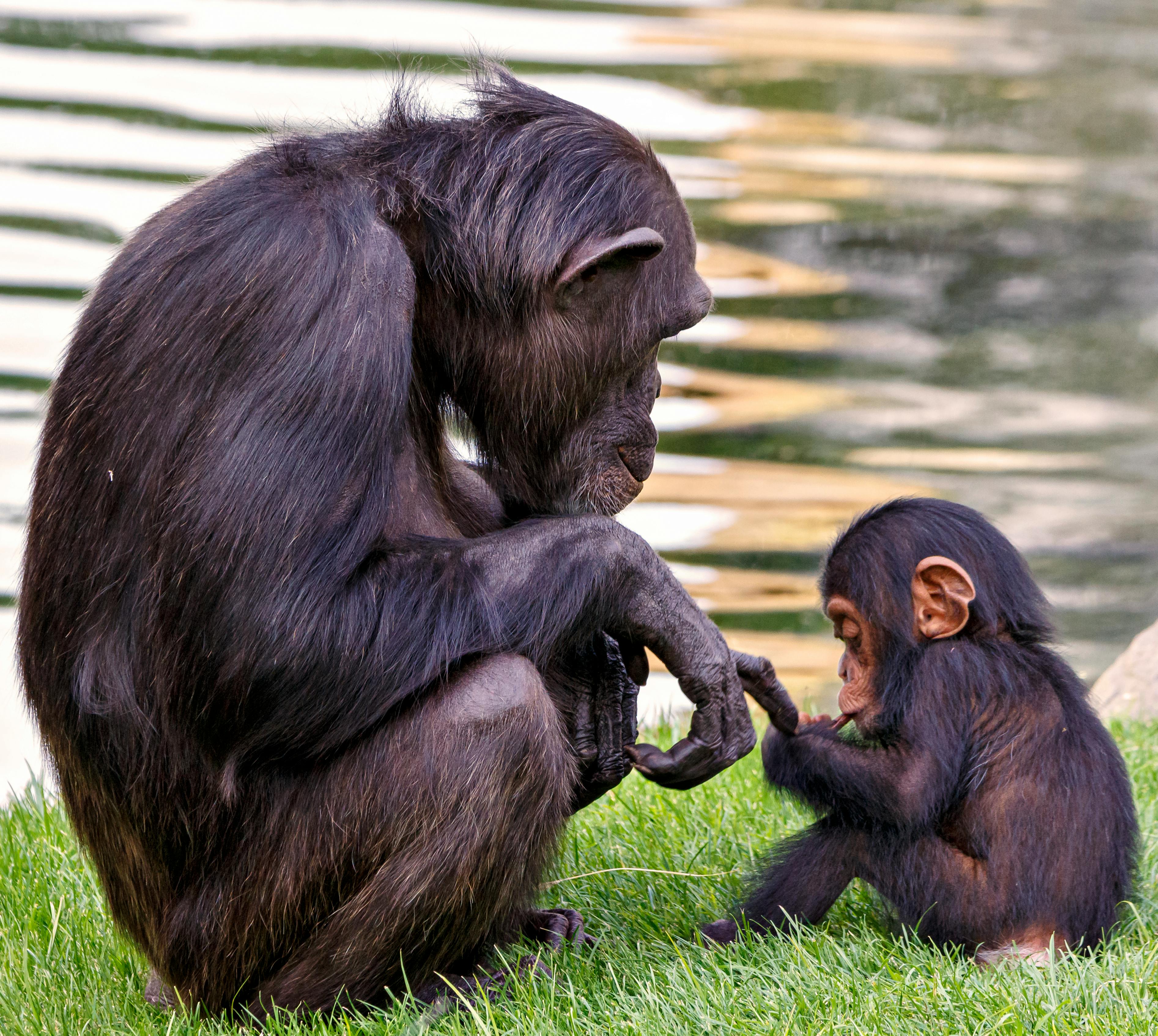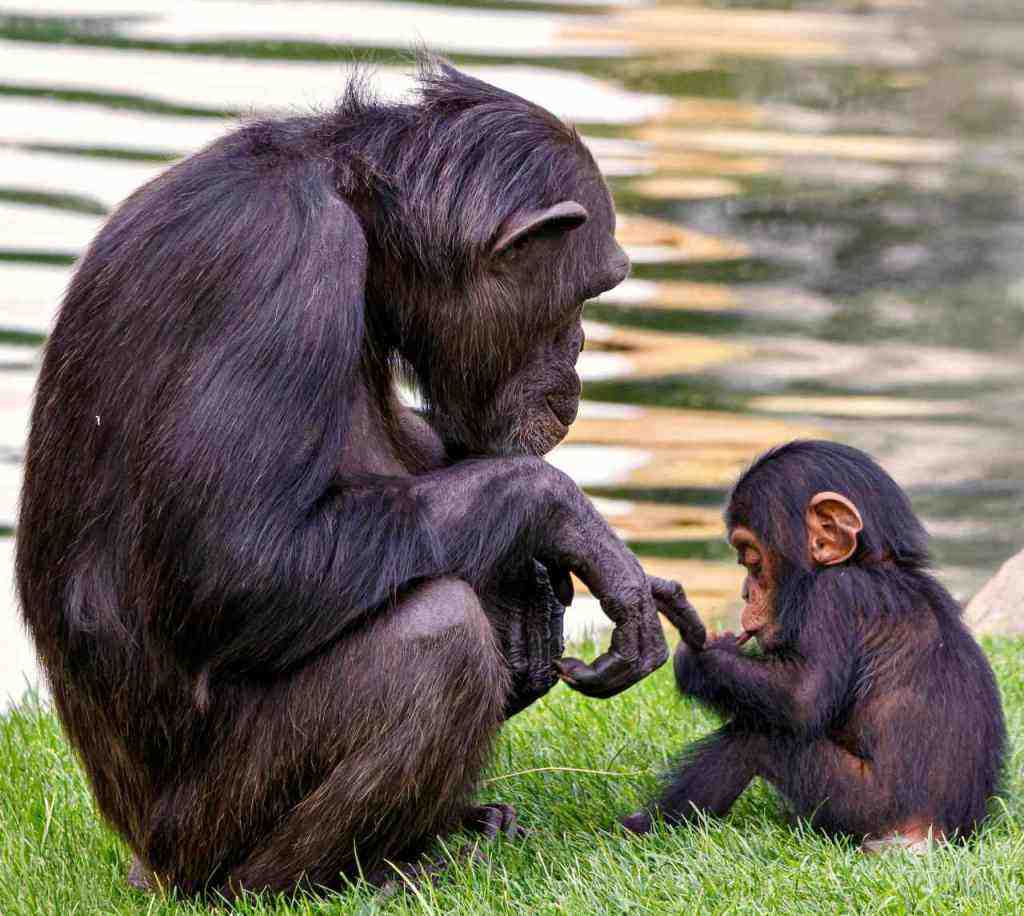The King of the Jungle’s “Babysitting” Blues: Why a Lion’s Reaction to Cubs is Going Viral

In a moment that has the internet roaring with laughter and recognition, a recent wildlife video has captured the hearts (and amusement) of millions. Filmed by the talented photographer Jacques Briam, the clip features a male lion exhibiting a rather… *familiar* reaction to the arrival of cubs. It’s a scene that transcends species, tapping into a universal human experience: the subtle art of avoiding responsibility. This isn’t just another cute animal video; it’s a masterclass in relatable behavior, expertly captured and amplified by a perfectly pitched caption.
The Viral Moment Unveiled: A Masterclass in Avoidance
A Striking Visual of Avoidance
The video opens with a serene tableau: a magnificent male lion, exuding an air of calm authority in his natural habitat. The tranquility is soon disrupted by the appearance of a lioness, accompanied by her playful cubs. Instead of a proud fatherly greeting or even a curious sniff, the male lion’s response is immediate and decisive. He rises, turns his back with a deliberate air, and ambles away, a clear visual declaration of his disinterest in childcare. The lioness, unfazed, continues her journey, a picture of maternal self-sufficiency, leaving the male to his apparent urgent, yet undefined, business.
The Caption That Sparked Relatability
The genius of this viral phenomenon lies not only in the visual but also in the accompanying caption, which perfectly distilled the lion’s actions into a universally understood sentiment: “When you hear ‘your turn to babysit’… and suddenly remember a very urgent errand.” This simple, witty line struck a chord, transforming a wildlife observation into a deeply human narrative. It’s this clever framing that has propelled the video beyond mere animal appreciation and into the realm of shared cultural commentary, sparking endless online discussion and connection.
Social Media’s Amused Response: The Internet Weighs In
A Universal Theme of Avoidance
The online community’s reaction has been nothing short of spectacular, a cascade of humorous and deeply relatable comments. The sentiment “So all men are the same regardless of the species” has been a recurring theme, highlighting how readily viewers project human experiences onto animal behavior. This shared amusement underscores a fundamental truth: the struggle to avoid domestic duties or parental responsibilities is a narrative that resonates across the human spectrum, and apparently, the animal kingdom too.
Humorous Interpretations of the Lion’s Actions
The lion’s swift exit has been a fertile ground for comedic interpretation. One popular comment humorously suggested, “That lion just remembered he had to ‘check on the herd’ somewhere very far away,” perfectly capturing the essence of a well-rehearsed excuse. Another user quipped, “He’s definitely pulling the classic ‘if I pretend not to see them, they are not my problem’ move,” further cementing the anthropomorphic humor that makes this video so engaging. These playful observations celebrate the lion’s apparent knack for sidestepping commitment.. Learn more about Watch
Praise for the Lioness’s Composure
While the male lion’s antics have stolen the spotlight, the lioness has also garnered significant admiration. Viewers have lauded her calm and collected demeanor, her seamless navigation of the situation without any apparent assistance from her mate. Comments like, “That lioness is a queen handling it all by herself,” speak volumes about the respect she commands. Another astute observation noted, “The female looks like she knew exactly what he was doing but did not care,” suggesting a sophisticated understanding or perhaps a resigned acceptance of the male’s typical role within the pride.
The “Guilty” Walk Away
Even the physical act of the male lion’s departure has been a subject of keen observation. His walk away has been described as “the definition of guilt,” a poignant attribution of human emotion to animalistic behavior. This interpretation further amplifies the video’s relatability, mirroring the subtle body language we often associate with individuals trying to evade confrontation or shirk responsibility. It’s a masterclass in non-verbal communication, even across species.
Understanding Lion Behavior in the Wild: Nature’s Division of Labor
The Division of Labor in Lion Society
Beyond the comedic parallels, the video offers a valuable glimpse into the intricate social dynamics and established roles within a lion pride. In their natural habitat, lionesses are the primary architects of hunting and cub-rearing. Their responsibilities are extensive, encompassing direct care, protection, and the crucial task of providing nourishment for the young. This division of labor is a cornerstone of their survival strategy.
Male Lions’ Protective Role
Male lions, while integral to the pride’s survival, typically focus their energies on a different set of responsibilities. Their primary role involves defending the pride’s territory from rival males and other external threats. Their involvement with cubs is generally more indirect, often manifesting as protection during critical moments or as a display of dominance. While they do form strong bonds within their pride, their day-to-day caregiving duties are notably less pronounced than those of the lionesses.
Natural Instincts vs. Human Parallels. Learn more about The Times
The immense popularity of this video stems directly from the striking parallel between the male lion’s actions and common human experiences. Our innate tendency to avoid chores, responsibilities, or even difficult conversations is a deeply ingrained aspect of human behavior. Witnessing these traits reflected in the animal kingdom, particularly in a creature as majestic and powerful as a lion, makes the observation both profoundly amusing and remarkably thought-provoking. It serves as a powerful reminder of how certain behavioral patterns, despite vast species differences, can appear strikingly similar.
The Photographer’s Capture: Artistry in the Wild
The Art of Wildlife Photography
Jacques Briam’s exceptional skill as a wildlife photographer is unequivocally demonstrated in his ability to capture such an authentic and emotionally resonant moment. The clarity, composition, and timing of the video allow viewers to fully appreciate the subtle nuances of the animals’ interactions. Such captures are not merely aesthetically pleasing; they are invaluable for deepening our understanding of animal behavior and for sharing these profound insights with a global audience.
The Importance of Authentic Footage
The authenticity of this footage is paramount to its impact. By capturing the lion’s behavior in its natural, unadulterated setting, without any apparent manipulation, the video gains immense credibility. This allows for genuine, uninhibited interpretation by viewers, fostering a stronger emotional connection. Raw, unscripted footage like this often leads to the most engaging and universally relatable content, striking a chord that polished productions sometimes miss.
Broader Implications and Connections: More Than Just a Funny Video
Relatability in Animal Behavior
The widespread appeal of this video underscores a fundamental aspect of human connection: our innate ability to find common ground with other living beings. When animal behavior mirrors our own experiences, it cultivates a sense of empathy and shared understanding. This particular video masterfully taps into the universal theme of parental roles and the often-humorous ways individuals navigate them, creating a bridge between the wild and our own lives.
The “Dad Bod” Analogy in the Animal Kingdom. Learn more about India
In a testament to the internet’s creative spirit, some online discussions have even drawn parallels to human cultural concepts, such as the “dad bod.” Humorously suggesting that the lion’s relaxed posture and apparent disinterest in active parenting align with certain human stereotypes, these lighthearted comparisons highlight the way humans interpret and project their own social constructs onto the animal world. It’s a playful acknowledgment of shared, albeit simplified, characteristics.
A Reflection of Domestic Dynamics
The lion’s behavior can be viewed as a simplified, yet remarkably accurate, reflection of domestic dynamics present in countless human households. The familiar scenario of one partner taking on a more active role in childcare while the other finds subtle ways to disengage or delegate is a narrative many can identify with. This video, in its own wild and majestic way, mirrors these everyday occurrences, adding another layer to its broad appeal.
The Enduring Appeal of Wildlife Videos: Nature’s Unscripted Drama
Captivating Audiences Worldwide
Wildlife videos continue to hold an unparalleled fascination for people across the globe. They serve as captivating windows into the natural world, showcasing the breathtaking beauty, intricate complexity, and often surprising behaviors of animals. This lion video is a prime example of how such content can achieve viral status by tapping into shared human emotions and experiences, creating a global conversation.
Humor as a Connector
The element of humor is an incredibly powerful tool for connection, and this video wields it with exceptional effectiveness. By presenting a potentially serious topic—parental roles and responsibilities—through a lens of lighthearted comedy, it becomes accessible and enjoyable for a vast audience. The shared laughter and subsequent commentary foster a sense of community among viewers, uniting them in a common appreciation.
A Reminder of Nature’s Wonders
Ultimately, videos like this serve as a profound reminder of the incredible diversity and inherent wonder of the natural world. They encourage a deeper appreciation for animal life and offer unique insights into behaviors that might otherwise go unnoticed. The viral success of this lion’s reaction to “parenting duties” powerfully highlights the enduring capacity of nature to entertain, educate, and, most importantly, connect us all.
The Lion’s Perspective: Instinct, Self-Sufficiency, and Interpretation
An Instinctual Retreat
From a purely biological standpoint, the lion’s actions are most likely driven by instinct and the deeply ingrained social structure of lion prides. His retreat may represent a natural response to the presence of cubs in a manner that doesn’t align with his primary duties of territorial defense or protection against external threats. It’s a behavior rooted in evolutionary strategy.
The Lioness’s Self-Sufficiency
The lioness’s confident continuation with her cubs suggests a remarkable degree of self-sufficiency and a powerful maternal instinct. She is inherently equipped to handle the immediate needs of her young, and the male’s presence or absence may not significantly alter her established maternal routine. Her capability is a testament to nature’s design.
Interpreting Animal Intentions
While humans are naturally inclined to anthropomorphize animal behavior, it is crucial to acknowledge the inherent limitations in interpreting their true intentions. The lion’s actions, though appearing remarkably relatable to us, are fundamentally rooted in his species’ specific survival and social strategies. What we perceive as avoidance might simply be a natural adherence to instinctual roles.
Conclusion: A Relatable King of the Jungle
The viral video of the male lion’s reaction to the arrival of cubs has undeniably struck a chord with people worldwide, largely due to its uncanny relatability. The humorous caption, coupled with the lion’s subtle yet clear disengagement from potential parenting duties, has resonated with a vast audience, sparking widespread amusement and commentary. While the lion’s actions can be understood within the context of natural lion behavior, where lionesses typically shoulder the primary responsibility for cub care, the human interpretation of his behavior as a classic avoidance of responsibility has transformed the video into an internet sensation.
It serves as a charming and insightful reminder of how animal behavior can mirror our own experiences, offering a moment of shared laughter and connection within the vast, intricate tapestry of the natural world. The photographer’s skill in capturing this candid moment has allowed millions to connect with a seemingly simple, yet profoundly relatable, aspect of life, whether observed in the wild or experienced within human families. The lion, often depicted as the mighty king of the jungle, is here presented in a moment that is, for many, the most relatable thing they will see today.
